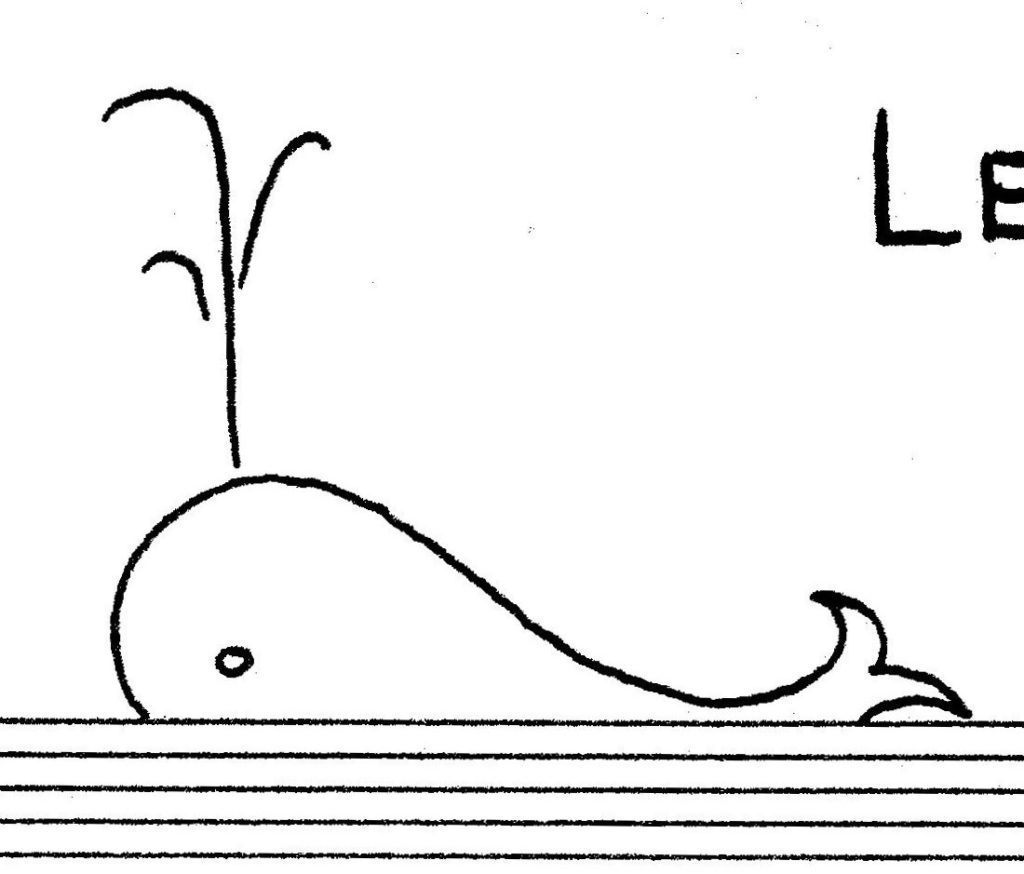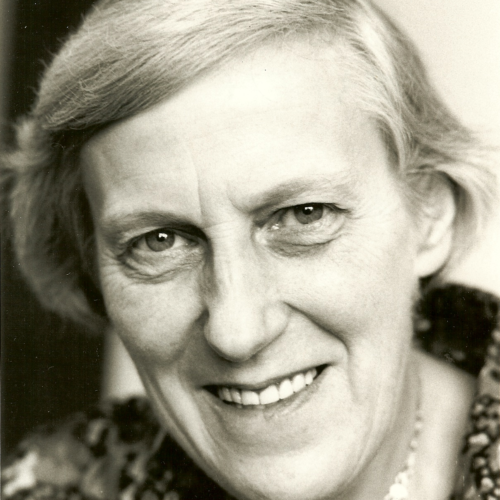Leviathan Ruth Gipps
Miniature Suite Ralph Nicholson
Prelude – Poco Adagio – Waltz – Finale
Arioso Julius Weissenborn
Blues for Contra Michael Burns
Variations on 'The Ploughboy' Josef Holbrooke
Sonate Op. 113 Terje Lerstad
Allegro moderato – Scherzo – Adagio cantabile – Presto con fucco
Suite Miniature Bohuslav Martinu
Moderato – Poco andante – Poco moderato – Andante – Poco allegro – Allegretto – Moderato
Bassnachtigall Erwin Schulhoff
Melancolia – Perpetuum mobile – Fuga, Allegretto grotesco
The Ox and the Ass Ruth Gipps
The Carnival of the Animals Camille Saint-Saens
Tortoises – The Elephant
Folies de Paris Alan Ridout
The Gare du Nord – David at the Louvre – Maxim’s – Up the Eiffel Tower – Fred Barlow at the Opera Comique
Chanson de Matin Edward Elgar (arr. Wesley)
The Bass Nightingale
Music from the Deep is a diverse collection of solo pieces for a normally reclusive instrument. Pitched an octave below the bassoon and with only a handful of brief orchestral solos, the Contrabassoon has long suffered from the notion that its register is too deep and its technique too limited for solo repertoire. Rarely heard outwith its natural orchestral habitat, an excursion to the front of the stage was always considered a step too far. Val Kennedy's brave commission from Ruth Gipps broke this mould. Leviathan provided the musical inspiration (and title) for this recording which attempts to redress the balance and show that the Contrabassoon can, if only occasionally, be considered a soloist in its own right.
The original idea
The idea for this unusual programme was prompted by a last-minute request from a colleague to give a concert for the BBC Scottish Symphony Club in March 2015. I thought it would be an interesting challenge to fill a whole evening with Contrabassoon repertoire at only a few weeks notice. “Music for Contrabassoons, Piano and Goldfish” featured duets by Robert Ronnes and John Steinmetz’ tongue-in-cheek theatre piece called Fish Phase (where I was joined by Heather Brown and a large water-filled bowl containing two toy fish) as well as several of the works in this recording. I hope it will inspire more players to be brave enough to bring the Contrabassoon into the spotlight to “gambol rather unfamiliarly on the surface” and introduce the uninitiated to the joys of the “Monster from the Deep”.
The whale logo
The whale logo which appeared on the original manuscript of Leviathan and which features on the sleeve of this CD has an interesting history. Ruth Gipps was painstakingly inscribing the front page of the manuscript when it was pointed out that she had mistakenly spelt out “Leviathian”. Jack Graty, a friend of the family who lived in the house with the Gipps’ offered to help. He was the Secretary and Librarian of the London Repertoire Orchestra who worked for the GPO. He took over the calligraphy and drew the whale logo which was copied onto each part. They both agreed it was definitely “Art”!


Ruth Gipps was born in Bexhill-on-sea where her mother was Principal of the local School of Music. A prodigious talent, she entered the Royal College of Music in 1937 to study oboe, piano and composition with Gordon Jacob and Vaughan-Williams. Despite the discrimination against female composers prevalent at the time her tone poem 'Knight in Armour' was premiered at the Last Night of the Proms in 1942 by Sir Henry Wood and she continued to compose as well as appearing as a piano soloist and oboe player; in fact in 1945 she played the Glazunov Piano Concerto No. 1 with the CBSO and in the same concert played cor anglais in her first symphony. A shoulder injury sustained in 1954 put paid to her performing career so she concentrated on conducting and composition, forming the London Repertoire Orchestra a year later. As a teacher she also held posts at Trinity College, the Royal College of Music and Kingston Polytechnic before retiring to live in Sussex. Her prolific output features five symphonies, seven concerti and numerous chamber works, including the two here for contrabassoon.
Leviathan was written in 1969 for Val Kennedy from the London Philharmonic Orchestra, who asked her to write a miniature showing off the double bassoon (she hated the name contrabassoon – “a mixture of two languages”). It was premiered in February 1971 by the Goldsmith’s Repertoire Orchestra conducted by the composer, and subsequently broadcast by the BBC Welsh Symphony Orchestra in July 1976 conducted by Vernon Handley. As the BBC announcer intones, it is a very unusual work for the lowest instrument in the orchestra; a Leviathan, or monster from the deep, emerges from the depths to gambol rather unfamiliarly on the surface.
Blues for Contra by Michael Burns is a reworking of a piece originally for tuba, both instruments being somewhat limited in their bass line roles in the orchestra and seldom featuring as soloists. Burns is a New Zealand bassoonist and composer currently living in the US. Here the contrabassoon plays both the ‘walking’ bass line as well as the technically demanding melody line, ably accompanied by the rhythmic pulse of the hi-hat cymbal. The original Blues for Tuba also alluded to two previous disasters: the loss of a tuba stolen from a car, and another flattened in an accident. No contrabassoons were damaged or lost during this recording.
The Suite Miniature was originally written for cello and piano by the Czech composer Martinu in 1931, and was suggested as a suitable recital piece by John Burness, who played contrabassoon in the BBC Symphony Orchestra and was a teacher at the Royal College of Music. The seven movements, though not technically demanding, allow the soloist to display a wide range of character and mood.
The two movements from Saint-Saens‘ well-known Carnival of the Animals, Tortoises and The Elephant hardly need any introduction, but are great party pieces for the repertoire-starved contrabassoonist; the animals’ respective size and slow-moving qualities have much in common with the largest and deepest woodwind instrument!
Chanson de Matin was first published by Elgar in 1899 as a work for violin and piano, although it is thought that it may have been written about ten years earlier. It proved immediately popular; Elgar later provided an orchestral arrangement which was performed along with its companion piece Chanson de Nuit at a Queeen’s Hall Promenade concert in September 1901. he also published a verson for cello and piano, which we have arranged here to take the melody line even lower.
The Miniature Suite is the second piece for contrabassoon by Ralph Nicholson, a violinist in the London Symphony Orchestra who turned to composing and conducting, often writing for colleagues such as Archie Camden, Leon Goosens and Gervase de Peyer. He first wrote an Impromptu for Val Kennedy which was broadcast in the same concert as Gipps’ Leviathan in 1976. After hearing and later performing the Impromptu the American virtuoso Susan Nigro commissioned the Suite from Nicholson, giving the first performance in 1993.
Joseph Holbrooke (1878-1958) was a prolific British composer who achieved some success before the First World War, but who railed against the dominance of German music and the general lack of support for home-grown contemporary music. By all accounts he was a colourful character with a reputation for being difficult; his attempts at promoting his own music were often accompanied by diatribes towards the “apathetic public” – generally directed at the very people who attended his concerts! Many of his pieces were inspired by his interest in mythology, mysticism and poetry such as Edgar Allan Poe’s The Raven. His youngest son was the famous bassoonist Gwydion Brooke (who changed his surname to distance himself from his father) and these Variations on “The Ploughboy” were written in 1956.
Erwin Schulhoff is perhaps the most intriguing composer featured in this recording and notable for being the first to write for a solo Contrabassoon. Born in Prague in 1894 he studied in Germany where he was influenced by jazz and the avant-garde; his anti-establishment views and position both as a Communist (who actually set the Communist Manifesto to music) and as a Jew ultimately led to his death in a concentration camp in 1942. The Bassnachtigall (bass nightingale) was written in Berlin in 1922 and as a postscript has the “Testament of Faith” below.*
The three movements are obviously a reaction against the musical conventions of the time and an example of his ‘revolution in art’, but they are also wonderful mood studies for melancholia (the first movement’s title), obsession and pomposity. We don’t know if Schulhoff ever intended them to be performed or if they were purely an abstract exercise: in the Perpetuum mobile second movement we have unashamedly used modern editing techniques to present it completely without breaths as we believe the composer originally intended. Maybe future performers will use circular breathing to create this effect?
Julius Weissenborn was a nineteenth century German bassoonist, teacher and composer now remembered largely for his study books which are still widely used today. Appointed at the age of 20 he became Principal Bassoon of the Leipzig Gewandhous Orchestra where he remained for 30 years, dying a year later at the age of 51. He composed numerous works for bassoon, including six entertaining trios and this soulful Arioso.
Born in Oslo in 1955, Terje Lerstad is a Norwegian clarinettist and composer who has written over 200 works and is an active exponent of contemporary Norwegian music. The four movement Sonate for Contrabassoon written in 1977 has many neo-classical elements but also includes modern techniques such as multiphonics and pizzicato effects (the tongue slapping against the end of the reed to mimic the plucking effect of a stringed instrument). The piece was broadcast by the BBC in its original form with string orchestra by the Langham Chamber Orchestra in May 1987 with Robert Ronnes as soloist.
The Ox and the Ass (Introduction and Carol) was originally written by Ruth Gipps in 1988 for the Double Bass player Russell Killick, who first performed it with the Salon orchestra in December 1990. As the composer later wrote, the piece was written for a player “who was a good musician but who hadn’t been playing the bass very long”, and the long lyrical lines she writes are not only sympathetic to the bass instrument’s technique but are also musically very effective and reminiscent of her teacher Vaughan-Williams. She later reduced the orchestral accompaniment for piano and arranged the solo part for contrabassoon (this time in D minor, a tone lower than the original).
The Folies de Paris were written for Val Watts (another Val!) in 1994 by Alan Ridout and are full of wit, joy and humour. The five movements describe the bustling Gare du Nord; Jacques-Louis David’s famous painting ‘Le Serment des Horaces’ hanging in the Louvre; lunch at the inordinately expensive restaurant Maxim’s; a very short trip up (and down) the Eiffel Tower, and finally a lively Can-Can in homage to Fred Barlow, the French operetta composer.
*Schulhoff poem translated by Peter Wesley and Jens Green